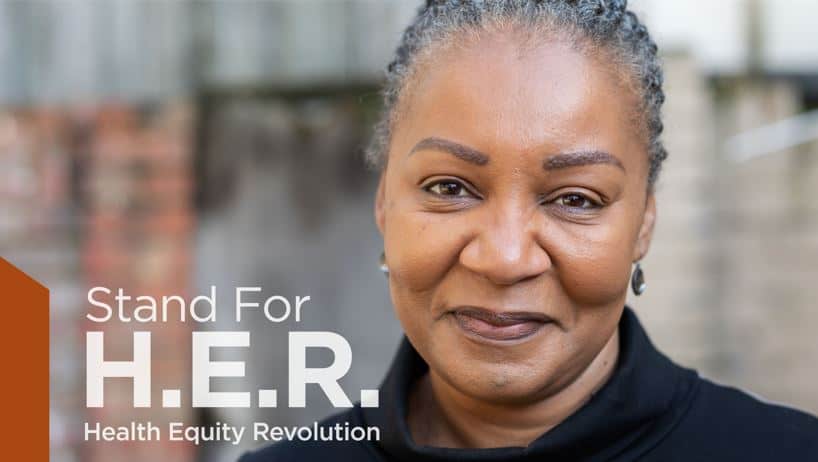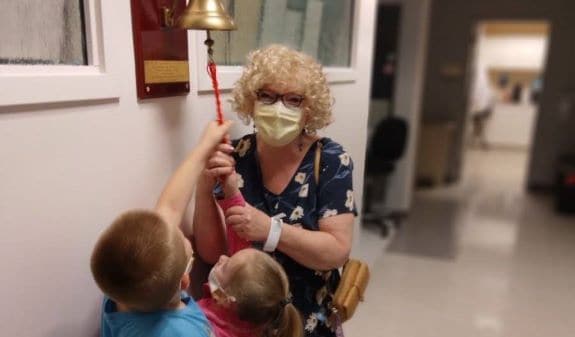
Omatola Gordon-Rose
Senior Manager, Stand for H.E.R., Susan G. Komen
Natasha Mmeje
Community Program Manager, Stand for H.E.R., Susan G. Komen
Kamesha Miles
Community Program Manager, Stand for H.E.R., Susan G. Komen
The COVID-19 pandemic has exposed the longstanding health care inequities that affect Black Communities. These inequities directly impact people with cancer. Black women, who are about 40 percent more likely to die of breast cancer than white women, are at a disproportionately higher risk of being affected by these inequities, including access to high-quality care.
Over the past two years, the COVID-19 pandemic has had a negative effect on health outcomes for chronic conditions, the environment, policies and health care systems. Those with lower incomes have an inequitable burden of COVID-19 and experience many barriers due to the adverse economic consequences of the pandemic. These barriers manifest as a lack of health insurance and access to primary care providers and high-quality healthcare.
Susan G. Komen’s Closing the Gap Report highlighted the some of these same disparities that affect Black women and their breast cancer care. Knowing that similar disparities existed for Black women with breast cancer before the COVID-19 pandemic and seeing how COVID-19 has worsened the disparities proves that much more needs to be done to address these disparities, especially during a global pandemic.
As a result of the COVID-19 pandemic, access to care was especially affected. Screening mammograms and diagnostic services were delayed. According to the Song et al. (2020) article Disruptions in preventive care: Mammograms during the COVID-19 pandemic, there was a drop in screening mammograms and diagnostic mammograms by 58 percent and 38 percent, respectively, in the 20 weeks starting from March 11, 2020. In April of 2020, the numbers continued to decline, with screening mammograms reduced by 99 percent and diagnostic mammograms reduced by 74 percent. Even though there has been some evidence that the number of mammograms is returning to normal, studies have found that women of color continue to face the most delays, which will eventually impact the outcomes for Black women. A new article titled Breast Biopsy Recommendations and Breast Cancers Diagnosed during the COVID-19 Pandemic shows a disparity in breast cancer diagnosis for women of color as a result of the pandemic.
It is still too early to fully quantify the negative effect that screening and treatment delays at the start of the pandemic have caused on late-stage breast cancer diagnoses and mortality rates. Black women whose late-stage diagnoses and mortality rates are already disproportionately higher than white women cannot afford to further delay screening or treatment.
So what should we do about it? We must continue to emphasize the importance of regular, early detection and screening. Early detection is a major piece in lessening breast cancer disparity in healthcare and teatment. We need to understand the fears and lack of information that create roadblocks to screening for Black women. We must also reinforce our efforts in proven interventions that reduce barriers in the continuum of care. One such intervention is the use of patient navigators, which are effective in communities of color. Komen has developed a robust, culturally responsive patient navigator program, a recommendation that came out of the Closing the Gap study.
Equally important, we must also look at the reasons why Black people continue to shoulder the burden of breast cancer and many other diseases. Recently, COVID-19 was added to a long list of diseases that disproportionately burden Black people, which includes but is not limited to diabetes, heart disease, stroke and asthma. It is not a far leap to think another disease will come along that will also disproportionately affect this population when another epidemic or natural disaster emerges. We must address the systemic shortcomings of our society, such as structural racism, implicit bias in the healthcare system and inequitable access to high-quality healthcare and services. We will continue to play a proverbial game of “whack-a-mole” with different diseases until we fully address the root causes of disparities.



